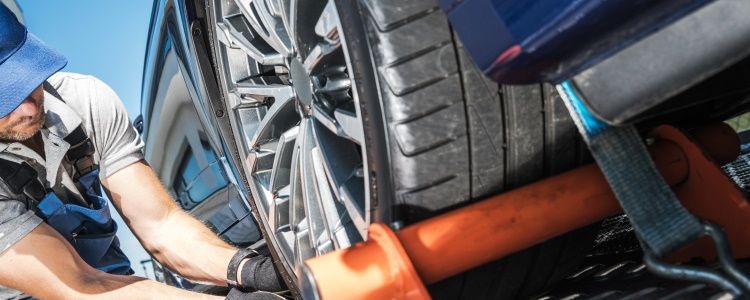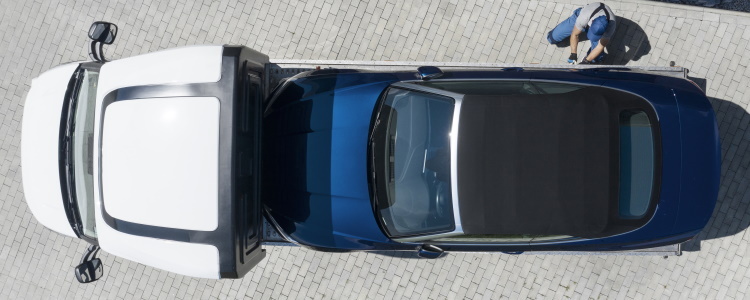Getting your car repossessed is no picnic. Vehicle repossession can be a big setback in life, but you may be able to recover from it over a period of time. Once enough time has passed, it's possible to get an auto loan after repossession – as long as you're working with the right type of lender. Many lenders are willing to approve individuals with damaged credit, and your chances could be improved by following specific steps.

Buying a Car After Repossession
When To Apply for New Car Loan After Repossession
The time it can take to qualify for a car loan after repossession varies depending on the lender, but you typically have to wait at least a year before you can apply for financing. This is because lenders are worried that you're going to default on a loan again, and repossession is just as expensive for a lender as it is for you.
Even though your car may have been repossessed, you are still liable for any outstanding balance on your former vehicle. Once a lender repossesses a vehicle, they typically sell it at auction to recover as much value as they can. If they're unable to sell the car for the amount you owe them, you're required by law to pay off the difference, which is known as a deficiency balance. The sooner you pay off the deficiency, the better. Paying off this balance can also raise your credit score.

Tips On Getting a Car Loan After Repossession
Besides being costly and hard on your credit, repossession can reduce the pool of lenders willing to work with your situation. For this reason, your best chance at getting an auto loan after a repo is going to come from a subprime lender.
Subprime lenders look beyond your credit score to get you financed based on your income, employment, and residence stability. These lenders specialize in working with people in unique credit situations, including repossession, bankruptcy, and bad credit.
Even though these lenders are more willing and able to work with someone in your position, there are a few things you can do to help make the process easier on yourself:
Save for a Down Payment
A good way to increase your approval odds is to finance as little as possible for the shortest term you can. One way to accomplish this is with a large down payment. A large down payment could improve your chances of being approved for a loan, as it lessens the risk that lenders have to take on. Lenders may also view you as a committed buyer if you already have a sizeable down payment in hand. Furthermore, this payment will lower the amount of interest charges you pay over the course of the loan.
The bigger your down payment, the less you have to borrow. Lower loan amounts can lead to reduced interest charges, shorter loan terms, lower monthly payments, and less time with negative equity.
Review Your Credit Report
Since you probably have to wait a year after repossession to apply for a loan again, you can use this time to improve your credit. To do this, get your credit score and reports and check them for accuracy. Removing any inaccurate entries can raise your score. You can also see where you need to improve, and work on those areas: pay off any past due accounts, begin making all payments on time, and reduce your credit card balances.
Receive copies of your credit report from Experian, Equifax, and TransUnion to see an overview of your credit, and you may even want to get your credit score. Having your credit reports in hand will allow you to check them for potential inaccuracies. It will also give you information that you can use to better understand your credit situation and help you improve it in the future.
Wait as Long as Possible
Being approved for a car loan after a repossession is often only possible if you wait until at least one year has passed. In addition, the longer you wait, the less of an impact a repossession will have on your credit score. The time between the repossession and when you apply for a loan will also give you an opportunity to save for a down payment and to improve your credit.
Keep Your Credit Cards
Although it may seem like a good idea to close your credit card account if you have bad credit, this may not be the best action to take. While it might seem counterproductive, having a line of credit available to you and using it responsibly has the capability of improving your credit situation. Your credit score often factors in how much credit you use and if you make on-time payments.
Consider In-House Financing
If you desperately need a vehicle after your car was repossessed, consider in-house financing. These Buy Here Pay Here or Tote the Note dealers typically do not check your credit, and they may allow you to finance an automobile if you meet their qualifications. However, you will probably have to pay higher interest rates at these types of dealerships.
Work With The Right Lender
Not every lender can work with repossession and the lenders that can only work through special finance dealerships. These dealers don't always shout about their special financing departments from the rooftops, so it's important that you know where to look ahead of time.
Stay Within Your Means
After a repo, it's not the time to finance your dream car. Making a reasonably priced vehicle choice that has a monthly payment you can afford is a great start for buying a car after repossession.
Apply Online with Us
When you don't know where to turn for the lenders you need, there's a potential for running all over town to no avail. It can be stressful and frustrating driving in circles not knowing which dealership has the resources you need. But, when you work with Auto Credit Express, you don't need to deal with that kind of stress.
When you are ready to buy a car after repossession, apply online with us. Auto Credit Express will match you with a dealership that will give you the best shot at being approved for an auto loan. We have assisted many individuals that have had their vehicles repossessed, and we may be able to do the same for you.
We work with a nationwide network of special finance dealers that have subprime lenders available. Rather than driving from one end of the city to the other looking for the right dealership, just fill out our auto loan request form. Once you do, we get to work matching you to a dealer in your area that has the lenders available to help people in unique credit situations. What are you waiting for?

Senior Automotive Financing Editor
Meghan has been writing professionally for over 25 years. She is expertly versed in automotive special financing and pricing analysis, having published hundreds of articles on Auto Credit Express and its sister sites, CarsDirect, and The Car Connection. Read more
Suggested Posts For You
Receive Free Updates
Get the latest credit tips, resources and advice delivered straight to your inbox.













